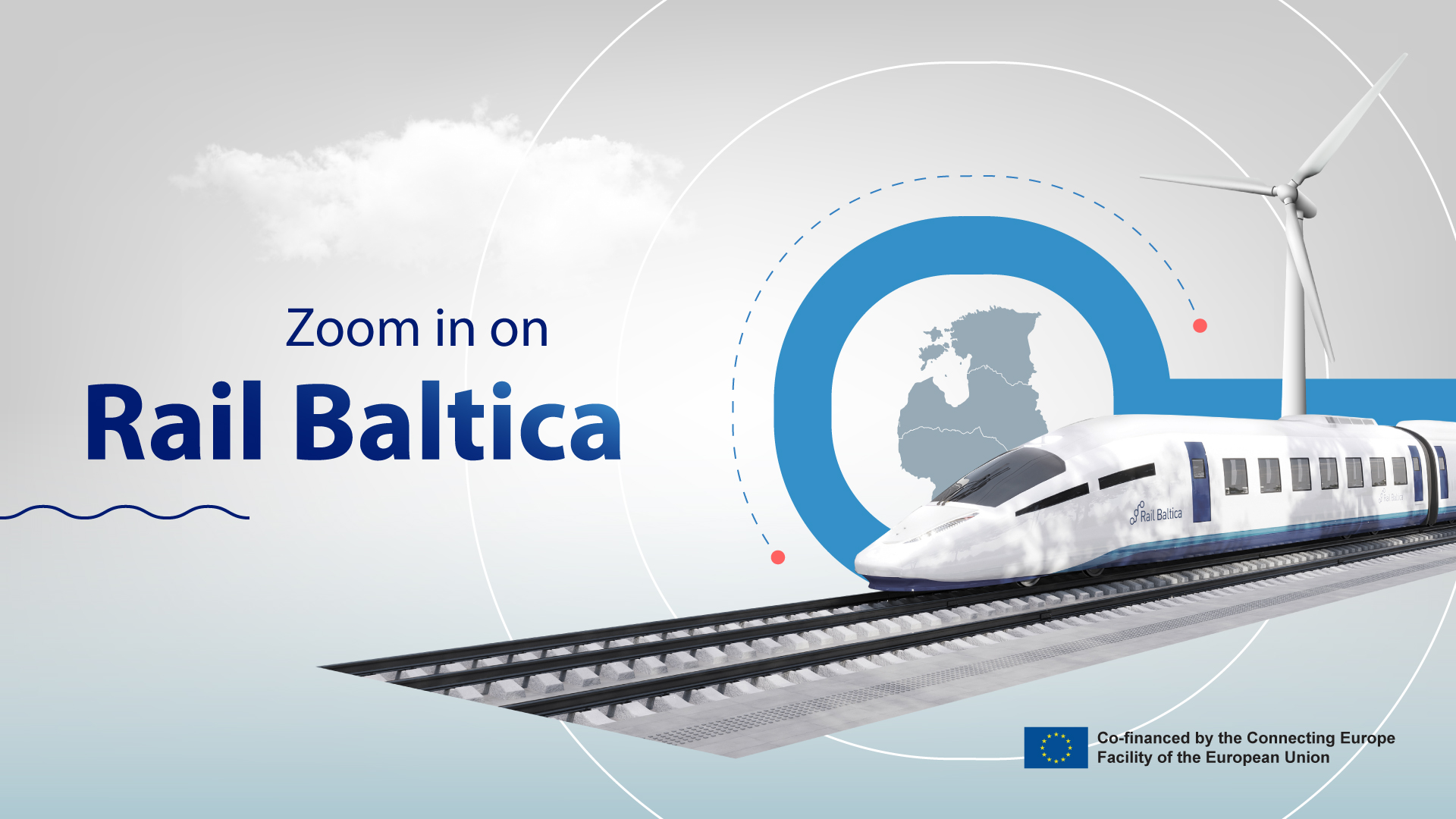The new episode of the video series “Zoom in On Rail Baltica” has been launched, bringing Rail Baltica followers closer to the design process that sets the foundation for the future of the railway.

Rail Baltica holds a prominent position on the European Union’s transport priority list as it serves as a vital link in the North Sea-Baltic corridor, connecting the north-western and northeastern regions of the European Union by 2030. Additionally, Rail Baltica’s technical specifications make it highly relevant for military mobility purposes.
In December 2022, the Transport, Telecommunications, and Energy Council adopted its position on the draft regulation for the Union guidelines for the development of the trans-European transport network (TEN-T). In this regard, Member States have proposed the inclusion of Rail Baltica in the Baltic Sea-Black Sea-Aegean Sea European Transport Corridor. This implies a future connection of Rail Baltica to Ukraine and Moldova.
Rail Baltica design
The design works for the mainline are nearing completion, with progress made on over 640km of the project. It is the foundation for further steps in the implementation of Rail Baltica.
The design process of Rail Baltica consists of three stages. The first stage is the preliminary or conceptual design phase, which involves determining the basic corridor of the high-speed line, developing initial technical solutions, and conducting comprehensive environmental impact assessments. In the second stage, known as the master design phase, attention is given to the finer details that lay the groundwork for the procurement of construction work.
Finally, the third stage is the detailed technical design phase. Project managers consolidate all the gathered information, incorporating input and approvals from key stakeholders. Detailed specifications of construction elements and estimated construction costs are provided, serving as a blueprint for contractors and guiding the construction process. It is important to note that the implementation of these procedures may vary across countries during the planning process.
Design works are intensively ongoing in the Rail Baltica line from Kaunas to Tallinn. This year, large-scale construction will start, including the priority mainline sections in all Baltic states.
In Estonia, the first Rail Baltica mainline construction works are planned to start this fall. Currently, three construction tenders have been announced and three are in the preparatory phase. While most of the point-type objects (terminals, maintenance depots, etc.) design works have been completed, detailed technical designs of the Rail Baltica mainline are ongoing in Pärnu County as well as environmental impact assessments.
In Latvia, it is planned that construction works outside of Riga will commence in 2023 after the approval of specific section construction projects. Currently, the design works are ongoing along the entire mainline, and the works are planned to be completed by the end of 2024. The first construction works in Latvia are planned to start according to the construction strategy in the priority direction from Riga Airport to the Lithuanian border.
Currently, the most technically prepared and strategically significant section to establish the connection with Europe as quickly as possible is this southern section towards Lithuania. After the next construction permits are prepared, the construction will continue in the northern direction of the route, ensuring the connection with Estonia.
In Lithuania, the Rail Baltica mainline from Kaunas to Panevėžys has mostly completed technical documentation, and construction permits have been granted. The construction works for this section will start soon. It is expected to be the first section to launch train operations on Rail Baltica’s high-speed line from Kaunas to Tallinn.
For the remaining sections in Lithuania, from Kaunas to Vilnius and from Kaunas to the Polish border, the tender for design and design supervision services has reached the second stage, and the contracts are expected to be signed by the end of this year.
The Rail Baltica design story, presented in this episode, offers a glimpse into the collaborative efforts involved in shaping the future of infrastructure.
The series “Zoom in on Rail Baltica” provides an overview of various aspects of Rail Baltica, including virtual design, the development of railway subsystems such as electrification, and the environmental and broader benefits associated with building the railway infrastructure.
Watch the previous episodes related to the planning and implementation of the Rail Baltica electrification system and the application of digital tools for efficient project planning and implementation.
